Across Channels, Across Teams: 10 Keys to a Cohesive Customer Experience
Published on September 30, 2017/Last edited on September 30, 2017/8 min read


Todd Grennan
Content Production Principal, Content Marketing at BrazeDear reader: This blog post is vintage Appboy. We invite you to enjoy the wisdom of our former selves—and then for more information, check out our new Cross-Channel Engagement Difference Report.
Right now, smartphones are central to modern life. Consumers depend on their mobile devices, carry them everywhere, sleep next to them, and feel uneasy when they’re not holding them. Brands increasingly depend on the powerful customer data collection that smartphones make possible and the user engagement strategies that they can support.
But while smartphones and other mobile devices are an essential platform for interacting with your customers, it’s rare that a person only engages on mobile. People still spend more than 30% of their digital time on desktop, and with an endless line of new and emerging technologies—from smart TV and connected cars to virtual and augmented reality—coming to the forefront, brands that take a mobile-only approach are likely to miss important segments of their audience and reach customers in ways that aren’t ideal for them.
The future of customer engagement is going to happen across devices and platforms and channels. To make the most of it, brands need to ensure that the different layers of their technology stacks—and the internal teams that manage them—can work together effectively. Here are ten key ingredients for any brand looking to make cohesive, cross-platform engagement a reality:
1. Thoughtful data collection
Modern customer engagement is built on data. To support the sorts of highly-relevant customer messaging and brand experiences that today’s consumers are increasingly coming to expect, you need to understand what they care about, what sorts of outreach they engage with, and how they interact with your brand on the different platforms they use. To do that, your brand has to think through what information you need to provide engaging experiences and reach your business goals, and which platforms (native app, web, in-store, etc.) you need to include in your data collection efforts.
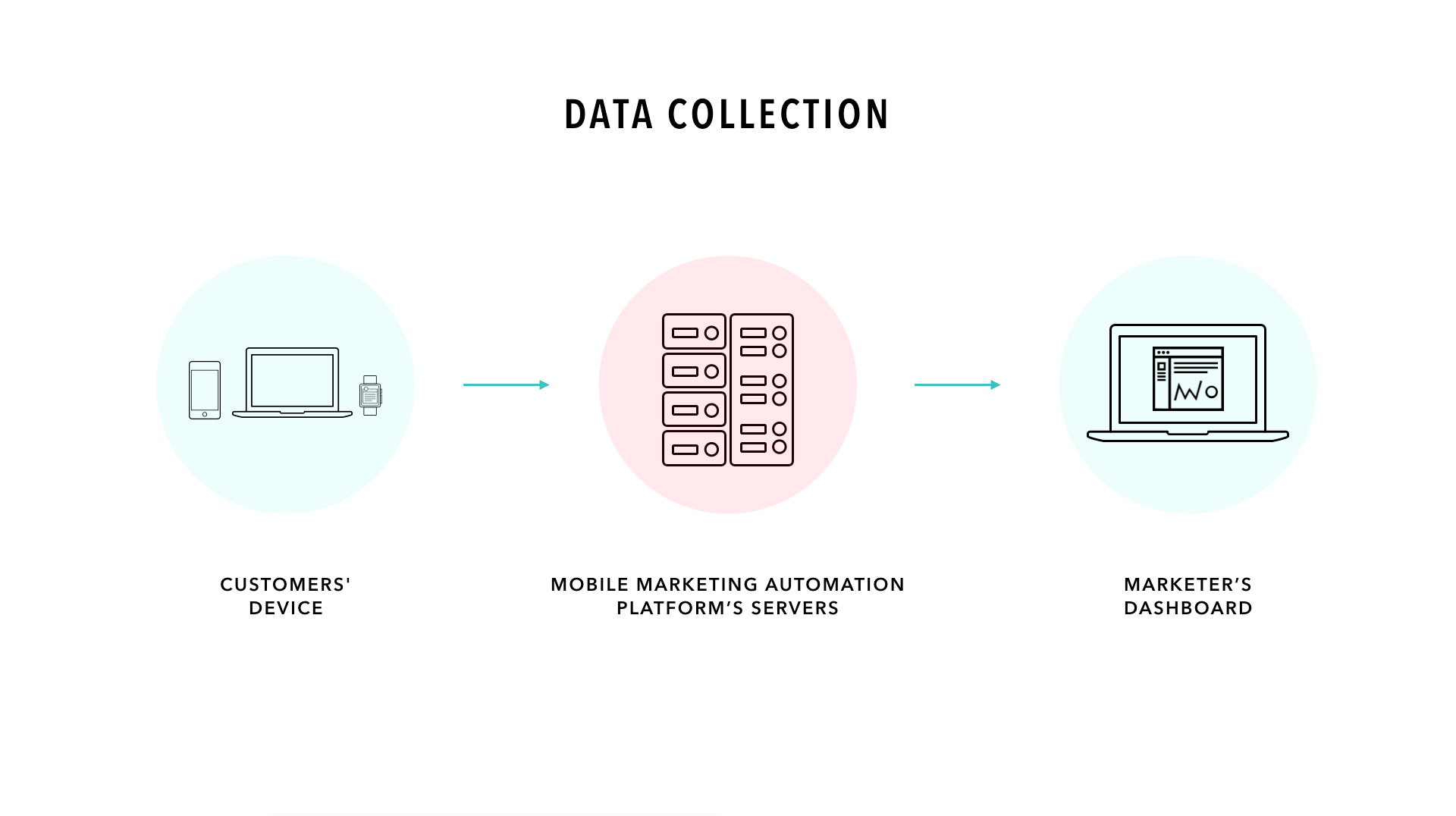
2. Comprehensive user profiles
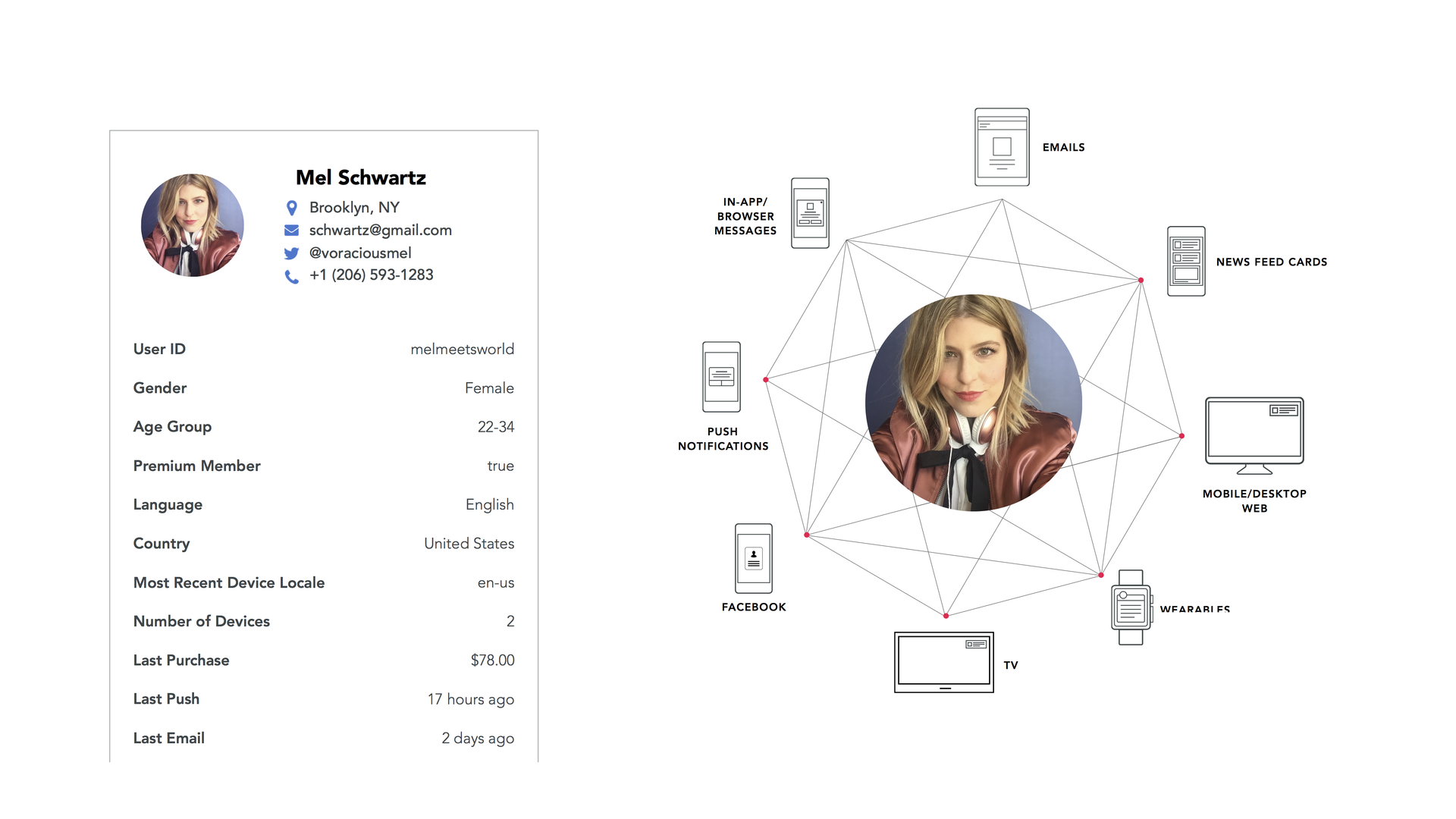
Lots of brands have data collection down, but when the time comes to actually do something with it, their efforts are seriously handicapped by data silos. It’s difficult to provide a truly engaging, individualized brand experience if lack of communication between your web and app presences means that you treat each user as two different people—the person they are on your website and the person they are when they’re using your app. To get over that hump, it’s important to make sure that there’s a single location where all relevant customer data is collected into comprehensive, holistic user profiles, no matter what system or platform each data point originated from.
3. Advanced segmentation and personalization
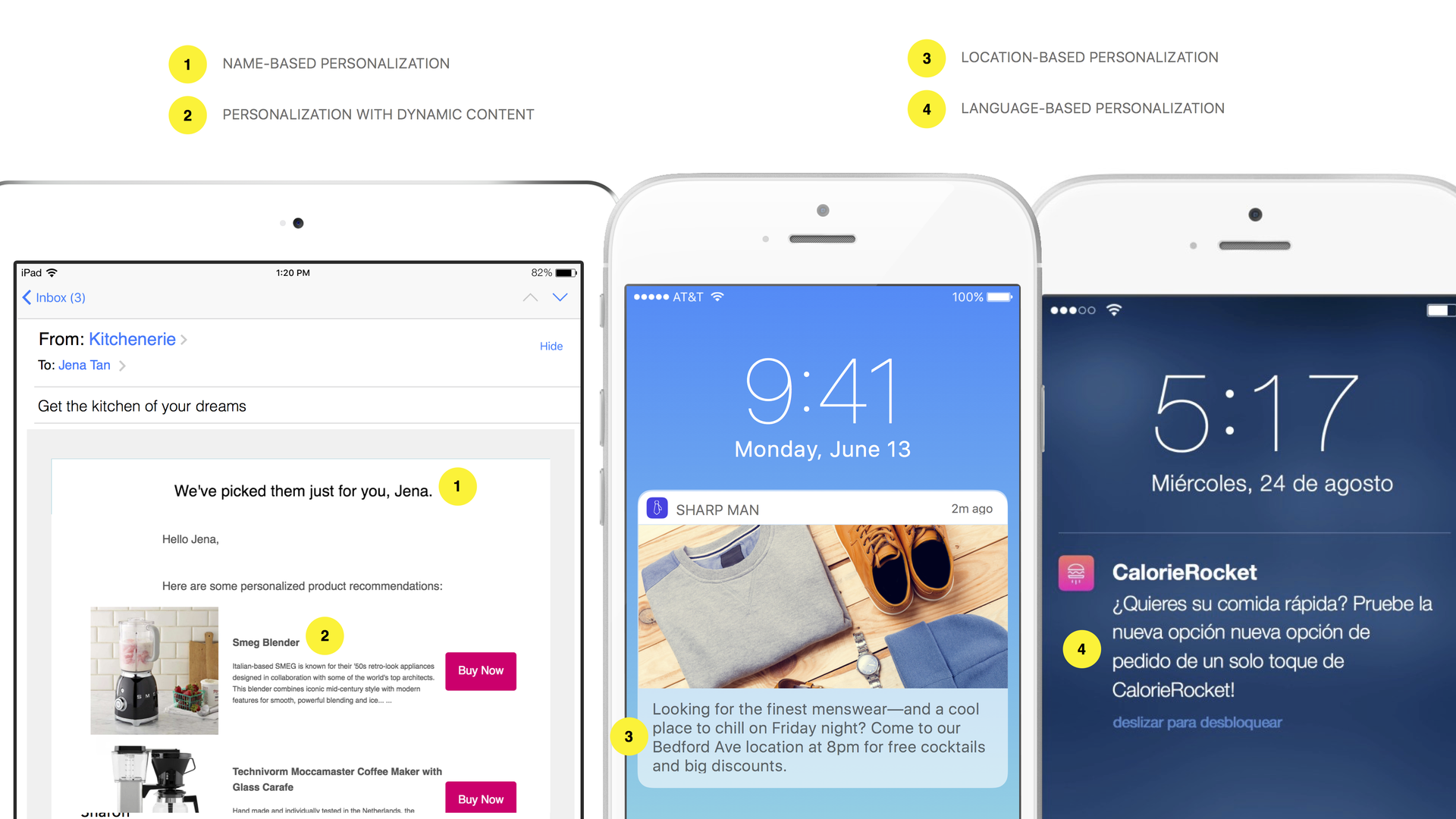
A consistent customer messaging experience is pretty easy if all you ever do if send generic batch-and-blast messages to the entirety of your user base—but then there’s no real upside in providing an experience that’s consistently irrelevant and unengaging. 83% of consumers now expect brands to adjust the outreach they send to provide individually customized experiences. To do that, you need a lifecycle engagement platform that can use the customer data you’ve been collecting to create targeted audience segments and leverage personalization to fit each message to the person receiving it. That can mean adding their name, targeting outreach based on location or language, or even dynamically adjusting message content in real time based on their specific interests and behavior.
4. Cross-channel messaging capabilities
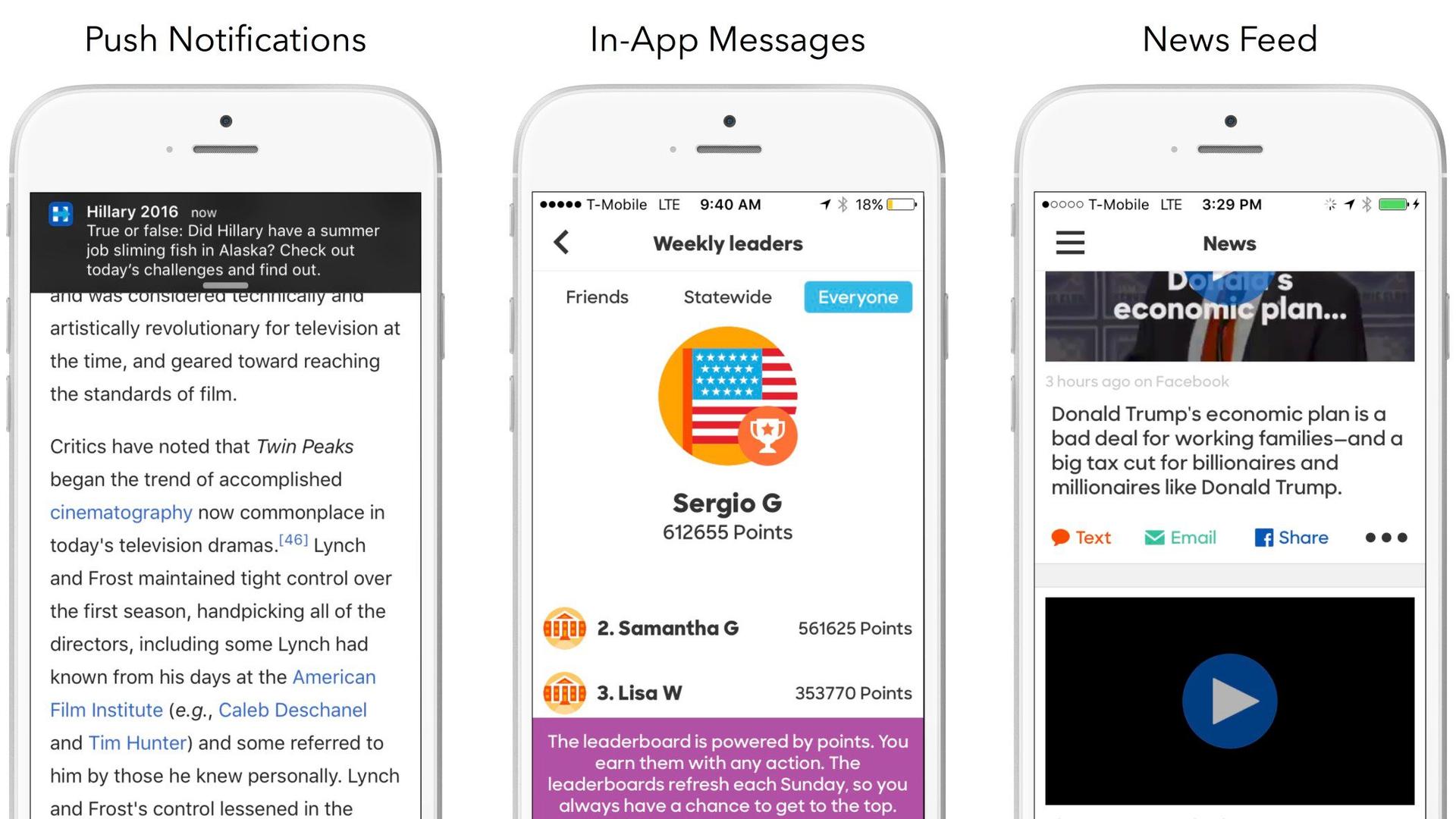
Hillary Clinton’s 2016 campaign app leveraged multiple channels to great effect
Okay, so you’re working from a rich pool of cross-platform customer data, and using your lifecycle engagement platform to target and customize the messages you sent to each users. That’s great. But do you have the ability to coordinate it across all relevant channels? Sending outreach in just one channel—email, say, or push notifications—is far less effective than embracing a cross-channel approach to customer engagement. Plus, by controlling your customer messaging from a single platform and leveraging customer data from holistic user profiles to inform those messages, you can more easily assure that your messages provide a consistent experience across channels, instead of having one team send email, one send web push, and a third send mobile messages and hope that you’re all on the same page.
5. Lifecycle management tool
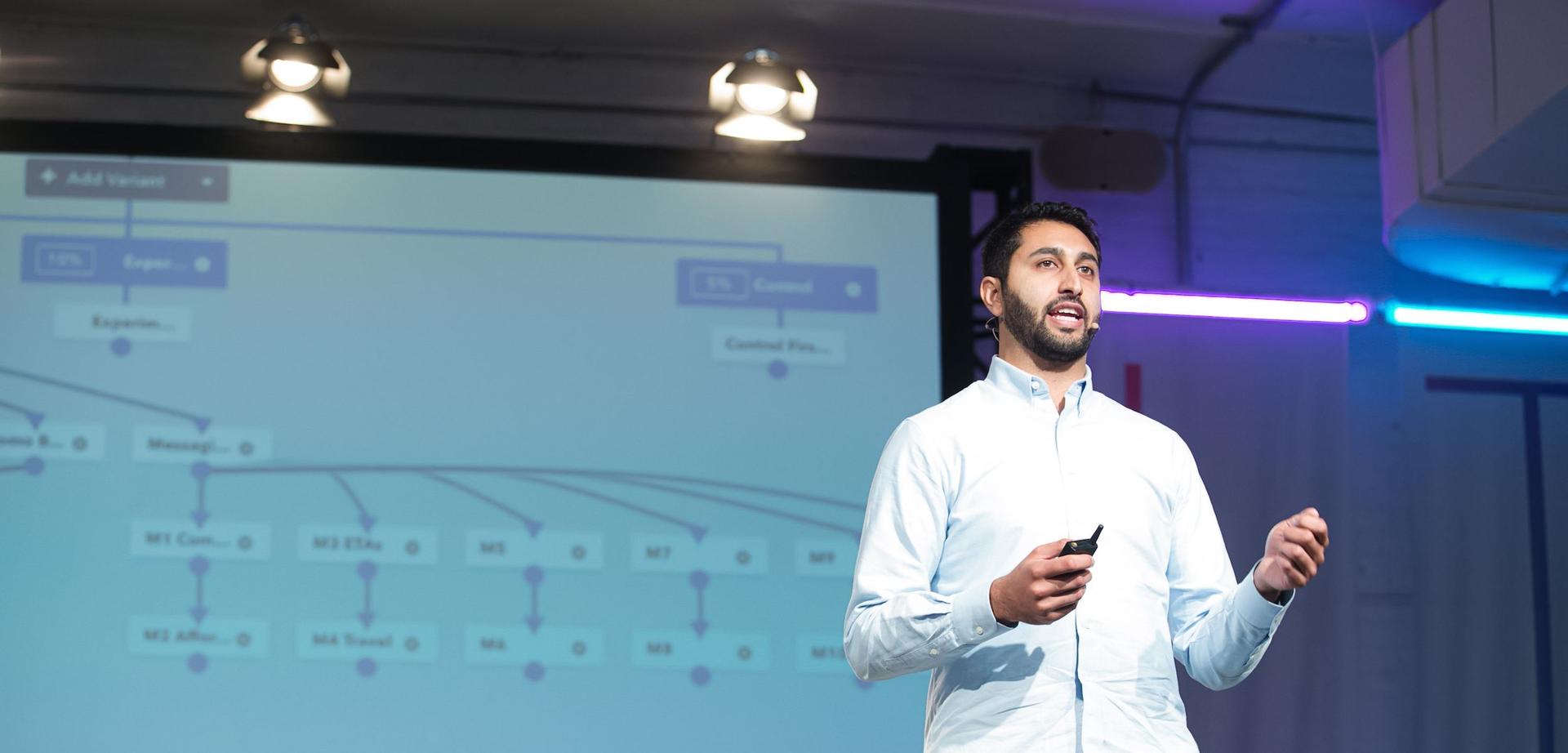
Lyft’s Milan Thakor speaking about Appboy Canvas at LTR 2017 in New York City
One difficulty with ensuring a consistent customer experience across different platforms and messaging channels? Complexity. When your brand is using a half-dozen or more messaging channels to reach millions of individual customers with a variety of targeted, personalized campaigns, it can be easy to lose sight of the totality of the customer experience you’re curating. Savvy marketers keep everything coordinated using lifecycle management tools like Appboy’s Canvas, which make it possible to easily visualize and control even highly complex, multi-step campaigns in a single view.
6. Exception events and frequency caps
When it comes to cross-channel, cross-platform customer interactions, there’s a lot of moving parts. You schedule an abandoned cart campaign that goes out a half-an-hour after a customer leaves your website without buying—only to have them buy on your app five minutes later. You schedule a cross-channel promotional campaign, but don’t think about all the transactional messages that some segments of your audience will be receiving in the same timeframe, leaving to message overload.
To avoid these kinds of annoying customer experiences, it’s important to have the ability enforce messaging rules that will help you avoid the worst of these oversights. That means taking advantage of exception events—which automatically cancel scheduled messages when circumstances change and they’re no longer needed—and frequency capping, which limits how many messages will be delivered to customers in a given time period, reducing the risk that you overwhelm them with your outreach.
7. Effective data management
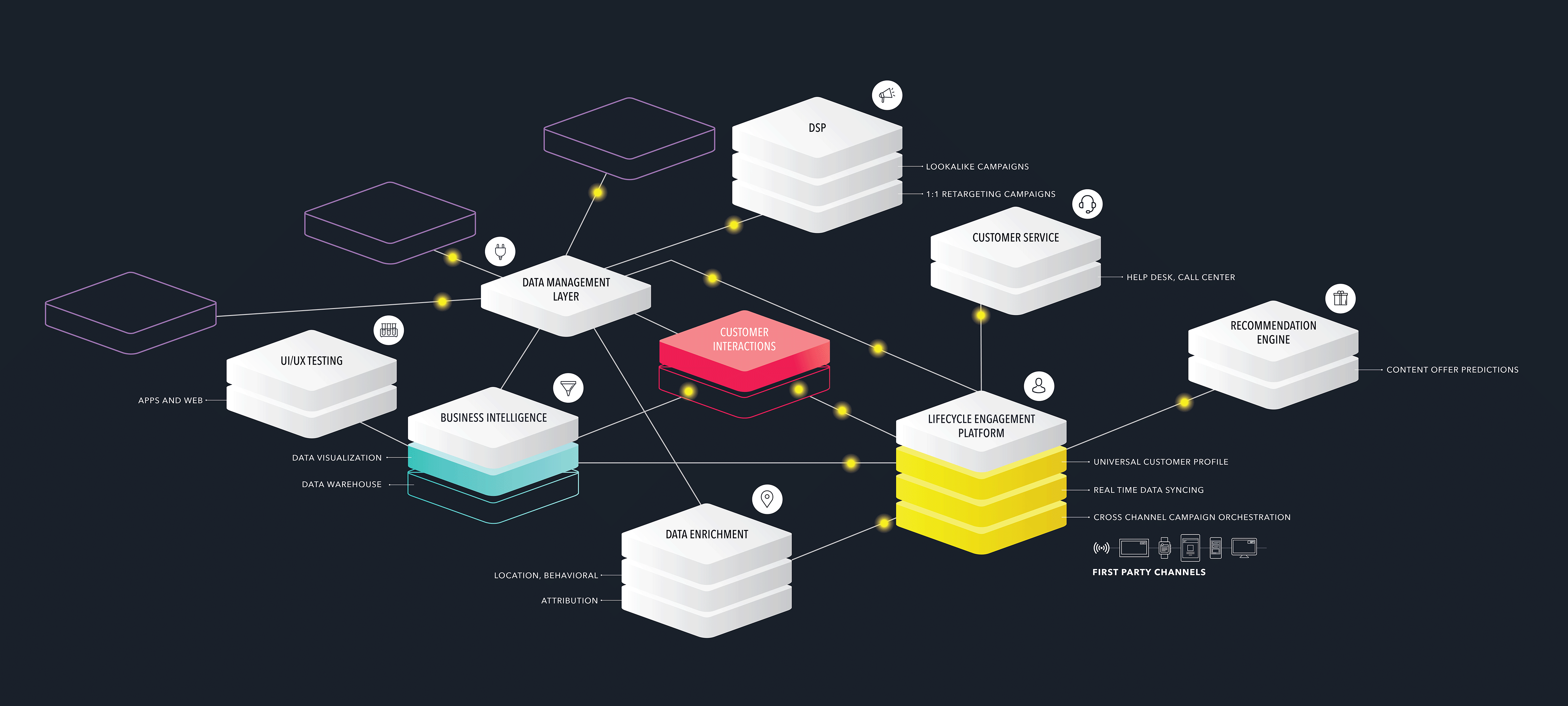
Data flowing through a marketing technology stack
While most companies know that data silos make it hard for them to get the most value out of the customer information at their disposal, it can be hard to make the leap from knowing about the problem to actually addressing it. The key? Ensuring that the technologies you use to gather, analyze, and act on customer data have the ability to talk to each other seamlessly, and in real time. That can mean direct integrations, like the ones between Appboy’s lifecycle engagement platforms and marketing solutions like PlaceIQ and Amplitude, but it can also be accomplished by building a best-in-class stack that leverages a data management tool like mParticle or Segment to link together otherwise disconnected technology platforms. However you do it, the key thing is make sure that information can move in real-time—delays of even a hour can mean the difference between responsive, relevant outreach and a message that bewilders instead of engages.
8. Campaign approval permissioning
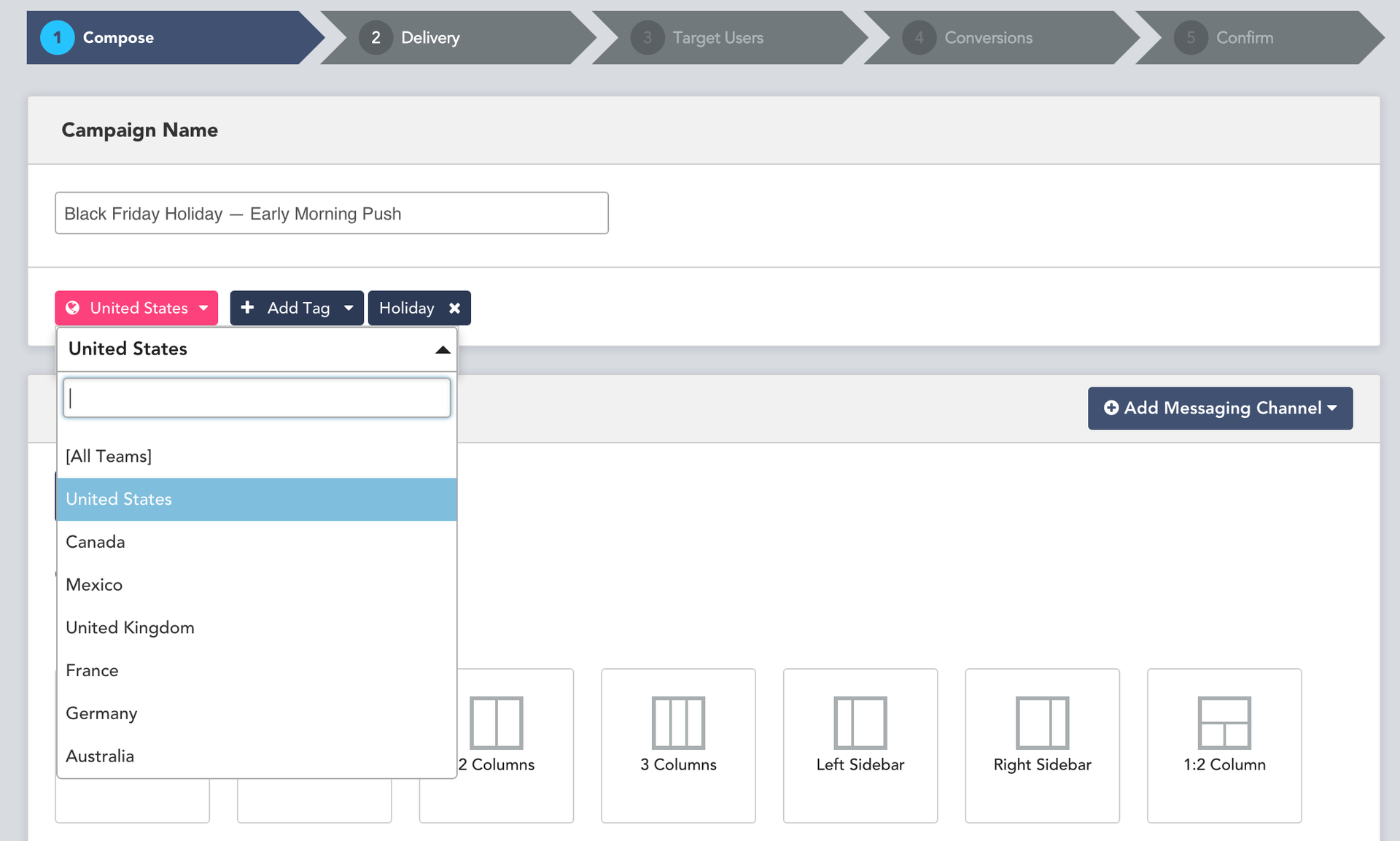
Teams tags can be applied to Segments, Campaigns, Canvases, News Feed Cards, and more
Some brands are small enough that a single person conceives, creates, tests, sends, and optimizes all of their outreach. But for everyone else, customer engagement is necessarily a collaborative process—whether between different members of your team, or between different internal groups within your company. To support effective collaboration, it’s important to have the ability to manage your company’s marketing permissions on an individual basis. By using an internal campaign permissions management tool like Appboy’s Teams, you can provision regional teams with permissions to manage the customers they’re most familiar with, while allowing a centralized group to control and coordinate communications and reporting worldwide. That way, you don’t have your marketing team in the United Kingdom accidentally sending campaigns that target customers who are under your Chinese team’s purview—or vice versa.
9. Consistent brand voice and style
While your company’s instruction manuals and the copy that appears in your print ads probably won’t exactly match each other, one of the smartest things you can do to ensure a consistent customer experience is to have a clear brand voice and style guide that informs the written and visual experience that your company puts out across platforms and channels.
Is your brand authoritative or approachable? Fun or distinguished? Whatever identity your company is shooting for, all customer-facing materials and experiences should match it, with reasonable adjustments based on context (for instance, the emojis you use in your social media posts might not be a great fit for your emails to upset customers seeking a refund).
10. Communication between departments and teams
All of these tools and tactics can’t work if you aren’t talking regularly with the other teams within your organization that own part of the customer experience. By cultivating strong relationships with your peers in other divisions, keeping them up to speed on how your customer engagement approach is shifting (and asking to be kept informed about their own evolutions), and sharing your campaign results and other KPIs, you can do a lot to make other departments feel invested in the customer engagement process and in your long-term success.
Final thoughts
Looking to learn more about putting together a marketing tech stack that can support this sort of unified, consistent customer engagement across channels and platforms? Check out our piece on creating a best-in-class stack.
Related Tags
Releated Content
View the Blog
The new inbox reality: How iOS changes are reshaping email marketing

Aparna Prasad

Experience optimization: Turning data insights into better journeys

Team Braze

December 2025 Bonfire Marketer of the Month: Jagex’s Emma Oliver
